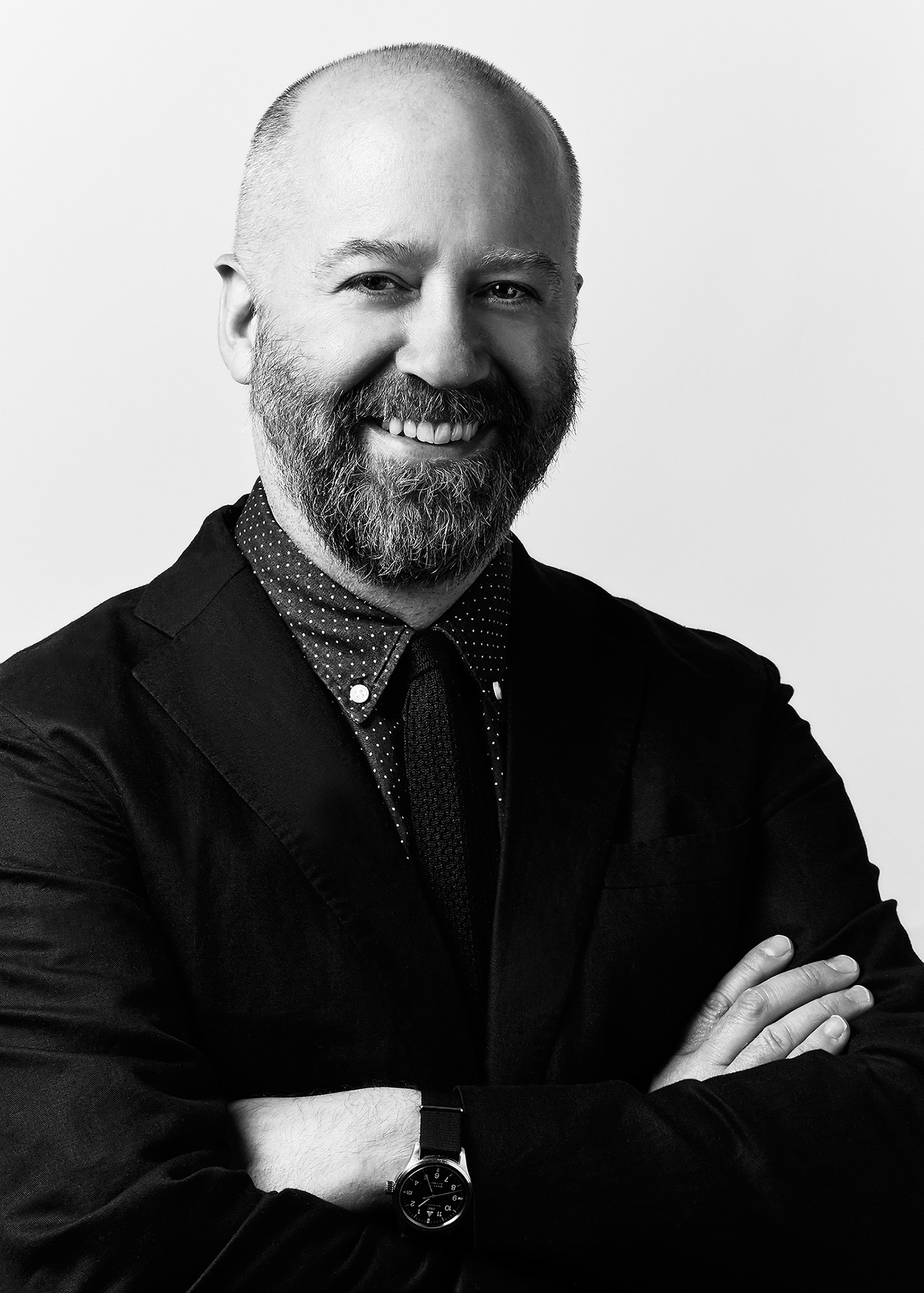MR Q: Richard Chai

Branching out: Designer Richard Chai explores new territory through collaborations.

Originally, I wanted to be an architect. So at 13 years old I enrolled in graphic design classes at Parsons (they didn’t have architecture…). One day I ended up on the wrong floor and saw a model posing in one of the classrooms. There was this really bad house music playing, but I was intoxicated by the energy. It turned out to be a fashion illustration class and I switched into it the very next week.
How did you break into the industry?
My first internship was at Geoffrey Beene under Alber Elbaz (Lanvin’s current creative director). I studied for a year in Paris and worked as a sketcher and illustrator for Lanvin. My first job was as a design assistant for Armani Exchange. I went on to Donna Karan and then Marc Jacobs, where I helped launch the Marc by Marc Jacobs menswear collection. After that I became the creative director for TSE and then finally, in 2004, launched my own line. I showed my first women’s collection for spring 2005 and men’s for fall 2009.
You’ve collaborated with Target, Penguin, Palladium and now Filson. What do you like about these projects?
Filson began as a collaboration for fall 2012 and I’ve since become the creative director of Filson Black, their fashion-forward line. It takes the components of Filson’s DNA, but is designed for the fashion consumer as opposed to the real outdoor enthusiast. And that’s the fun thing about collaborations: they can be for one season, or in this case, go forward into something more.
Collaborations allow me to deconstruct things in a way that feels new. I like to work with brands that have a strong heritage or history, so I’m able to work with classic things and reinterpret them in a modern context. It’s always about working with brands that I’m inspired by or feel that I can bring something new to. I make sure that any collaboration relates to what my collection is about for that particular season.
What are the challenges?
It’s not so much challenging, but concerning whether or not your collaborative partner will execute your vision correctly. However, if you didn’t think they could deliver, you probably wouldn’t have gotten involved with them in the first place.
What’s in it for the brand? The designer?
Many times bigger brands will eventually plateau, or they’ll want to reach a different audience. Collaborating with [an independent designer] attracts new customers, creates buzz and press that the brand would never get on its own. It’s great for the designer because they become affiliated with the big brand and also reach a broader audience. It’s important for me to work with brands that I believe in and respect. Emerging designers get offered to do things all the time, so it’s really about picking and choosing what feels right.
You’ve worked for some of the top brands. What have you learned along the way?
It sounds cliché, but I’ve learned that you have to follow your instincts and stay true to who you are. It’s very easy to get caught up in trying to please everyone else in the industry. You get advice from a lot of different people and it can be helpful, but if it doesn’t fit into what you’re doing or doesn’t feel right, then you have take it with a grain of salt.
What’s been your greatest accomplishment so far?
Things like winning CFDA’s Swarovski Menswear Designer of the Year award, being named a finalist in the CFDA Vogue Fashion Fund, and being nominated for the CFDA GQ Fund have all been great accomplishments. But then there are things like starting my company or getting my first office. There have been both sentimental and professional achievements along the way.
How would you describe your personal style? How is it reflected in your line?
My style is casual. I’ve never really been too concerned with coordination or head-to-toe dressing. I’ve always just kind of put things together. It’s more about what feels right when I wake up in the morning. There’s always an element of comfort, even when I’m dressing up or have a black tie event. I have this sense of ease and I think that’s always been a tone in my collection and a reflection of who I am. My collections are never too precious or uptight and never feel too intimidating. There’s always this relaxed, cool vibe that’s slightly grungy and slightly refined at the same time. Some of the key items for fall 2012 were parkas and outerwear, uneven striped wool suitings and washed corduroys.
What are your interests outside of work?
I like to go to concerts. I listen to everything from alternative, to old school grunge and hip hop, to some of the newer things. I like to ride my bike, too. It’s a fun way to see and explore New York City.
What advice would you give to young designers?
Work really hard. There’s this idea that you don’t have to work hard to be successful anymore. I think reality TV is slightly to blame for that, but it doesn’t work that way in our industry. The harder you work, the more you learn and the better you become. If you commit yourself to something and work hard, you’ll get results.

